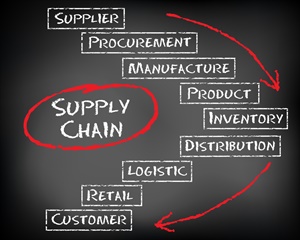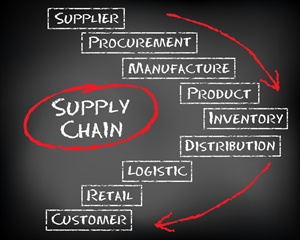
The latest semiconductor supply crisis is brewing in the manufacturing equipment industry. ASML, the sole producer of critical EUV lithography machines used in fabs, recently announced it can’t get enough lenses from its supplier, Zeiss, to fulfill its needs.
The chip industry expects to build 20+ fabs over the next several years to remedy the global semiconductor shortage. Now those factories may face headwinds due to a lack of manufacturing equipment.
Not to rain on anybody’s parade, but this might not be a bad thing. For the electronics supply chain, the only thing worse than a shortage is a semiconductor glut.
New fabs advance semiconductor manufacturing and design — they don’t just churn out more chips. But as bad as this shortage is, it’s worth looking back at the inventory surplus of 2000-2001. It literally changed the way the supply chain conducts business.
The dot.com boom of the late 1990s fueled demand for internet-enabled everything. Component orders weren’t really scrutinized so OEMs and EMS providers with big expectations placed orders across multiple distributors and suppliers. When the internet bubble burst there was a $13 billion excess of chips alone.
Customers pushed their excess back on distributors and EMS partners that had to write off millions of dollars’ worth of inventory. There was rancor among supply partners; component prices plummeted and the gray market thrived. Processes such as JIT, BTO, lean and monitoring buying patterns were gradually put into place.
Ironically, these practices contributed to the current shortage. But just having more chips isn’t a solution.
My EETimes colleague Stefani Munoz recently spoke with Tirias Research founder and principal analyst Jim McGregor about the impending fab free for all.
Capacity is only part of the story
“There is definitely a possibility of an oversupply,” McGregor said. “Even if demand kept up — assuming there’s no economic fallout, no industry correction — we could still be heading there.” Intel’s currently trying to build four brand new state-of-the-art fabs; TSMC and Samsung also are adding capacity, he noted. “If you add up all of the capacity that could potentially be coming online, we could definitely overshoot it, and it wouldn’t be the first time.”

Capacity isn’t the only problem. Poor forecasting set the stage for the latest chip crunch. The global supply chain has been upended by Covid and hasn’t yet rebounded. Semiconductor materials are in short supply. Contamination recently halted Western Digital’s NAND flash output. Around the globe, airports and seaports have been opened and closed; logistics costs are skyrocketing and geopolitics are affecting the flow of goods.
Russia’s invasion of Ukraine threatens the global supply of neon which is used in chip manufacturing.
The goal is not just catching up with demand, said McGregor, it is balancing manufacturing. Asia-Pacific is still the hub of electronics production.
“Part of this [buildup] is also rebalancing because geopolitics has gone nuts in the last couple years, and we don’t know what’s going to happen. Even if we overshoot demand, it’s still going to be important to that we have more manufacturing capacity in other regions, especially Europe and North America,” he said.
The shortage hasn’t been all bad for chip companies. They’ve been able to raise prices. Revenue continues to rise. There’s little downside to insatiable demand — when that drops, it’s time to worry.
But for for all the talk of agility, ramping production is notoriously slow and factories are a costly, long-term investment. ASML chief executive Peter Wennink notes Zeiss faces the same hurdles. “Once a factory is ready, they need to order the manufacturing equipment; they need to hire people. And then…it takes more than 12 months to make the lens,” he told the Financial Times.
McGregor is anticipating a correction. “Our economy has been humming along for a long period of time and the pandemic was a blip in terms of any adjustments to demand. If anything, it increased, especially in terms of technology. There is going to be a correction coming, the question is when and how much.”
To McGregor’s earlier point, fab capacity is also about balance. The number of new fabs may be less important than where those factories are built.
The supply chain exists, in part, to manage supply/demand imbalance. New — and welcome — practices are emerging. Digitization will better connect and inform partners. Distributors are providing supply chain solutions rather than just parts. Engineers consider component sourcing as they develop designs. Contracts focus less on price-reduction goals and more on customer commitment. Sustainability is a common goal.
This time, a chip shortage is the catalyst for evolution.


